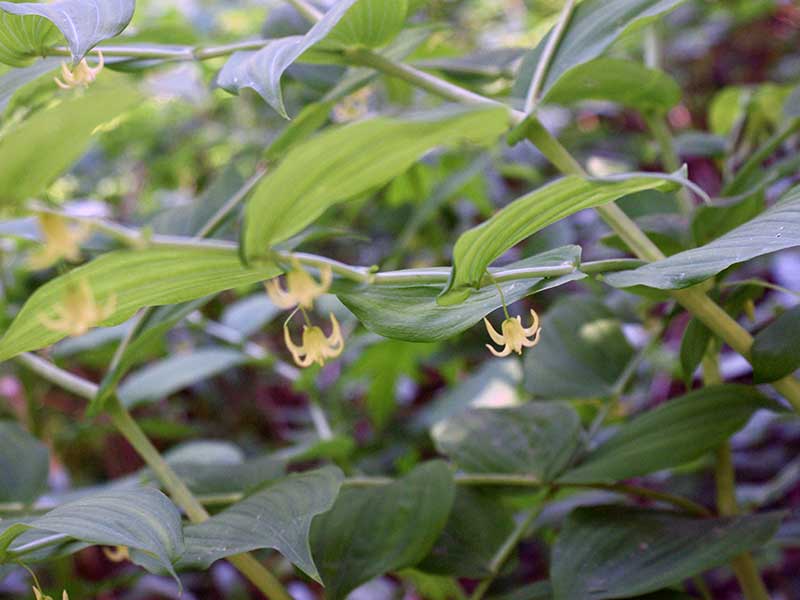Streptopus amplexifolius / white twisted-stalk
- creeping herb
- oval, clasping leaves; parallel veins; sharp tip
- pronounced stem “kink” at each node gives twisted look
- drooping, cream-colored flowers, 6 recurved tepals, borne singly
- single, elongated red berries in fall
- found in moist undergrowth
Also known as: watermelon berry, clasping twistedstalk, claspleaf twistedstalk
See also: Solomon’s plume (Maianthemum racemosum)
White twisted-stalk plants are generally creeping but may grow up to 3 feet tall. The flowers are not especially conspicuous; rather, one is likely to first notice the leaves. These are oval with parallel veins and narrow to a sharp “drip tip”. The leaves lack petioles and are clasping, i.e. they completely encircle the stem. They are arranged alternately on stems that have a kink at each leaf axil, giving an overall “twisted” or wiry look.
Twisted-stalk flowers are very small to teeny, and creamy, i.e. yellow to greenish-white. They occur singly rather than in a more complex inflorescence, drooping from the axils of the leaves on kinked pedicels. Each flower has six recurved tepals up to ½ inch long.
White twisted-stalk is found in moist, dense undergrowth. It spreads clonally, by rhizomes.
Interesting bits – Although “it is said” that the raw shoots have a cucumber-like flavor and that the berries are juicy and taste watermelon-like, the plant is also considered poisonous. Let that be a warning from your mother and don’t eat it except under the supervision of someone who, for some reason, actually knows.
Finally, white twisted-stalk looks similar to Solomon’s plume (Maianthemum racemosum), but can be distinguished easily by the fact that twisted-stalk has axillary flowers (and fruits) singly along the stem rather than a multi-flowered terminal inflorescence. In addition, Solomon’s plume always grows as single, unbranched stems. Twisted-stalk, in contrast, can be branched at the base. In fruit, twisted-stalk is highly visible, even in thick undergrowth, because of its single, red, juicy berries. Solomon’s plume, on the other hand, has grape-like clusters of fruit at the ends of the stems.
| Color | |
|---|---|
| Family | |
| Blossom size | |
| Inflorescence size | |
| Inflorescence type | |
| When? | |
| Where? |


